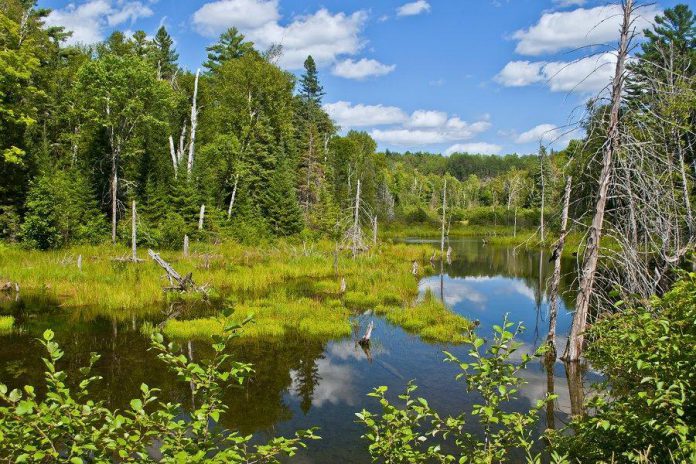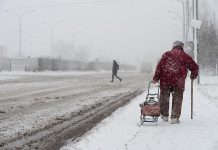
You don’t have to go far to find someone who’s fed up with winter. This winter season has been colder and snowier than in recent years, which has left even the heartiest souls anxiously waiting a reprieve.
The colder weather has allowed for near-record ice to form on the Great Lakes. Ice coverage has reached 90 per cent, a level not seen since the ’70s.
Open water still remains on Lake Ontario — due to its size and depth — but elsewhere, the Great Lakes are locked in solid ice.
Even while frozen, the Great Lakes remain an important piece to a vast puzzle that we all live in: the watershed. Next week, during Canada Water Week, we celebrate the watershed and the importance it has to each of us.
Our country contains five main watersheds: the Atlantic, Pacific and Arctic Oceans, Gulf of Mexico and Hudson Bay. The majority of Canada’s water drains into one of these larger bodies of water. The largest of these is the Arctic Watershed, which includes the Mackenzie River Basin, covering 1.8 million square kilometres and draining 18 per cent of Canada’s landmass. There are hundreds of smaller sub-watersheds throughout our country that drain into our local lakes, rivers and streams.
Peterborough lies in the Trent Watershed, draining the Kawartha Lakes and hundreds of creeks, streams, and rivers into Lake Ontario and — eventually — the Atlantic Ocean. When you think about the bigger picture, about where our water is going and how many people rely on it, it becomes clear that we need to do whatever we can to keep it clean.
In urban areas, we need to be concerned about storm water runoff.
Pet feces, detergents and cleaners, spilled motor oil and other automotive fluids all can be found in storm water runoff. With the increased presence of paved surfaces, this contaminated water is finding its way into our lakes, rivers, and streams at a faster rate — leaving a legacy of fouled water for future generations.
In urban neighbourhoods, most water doesn’t get a chance to be absorbed into the ground. It hits the asphalt surface and quickly drains away, taking with it harmful pollutants. We can slow the water down through several different steps. If your drain spouts connect directly to a storm sewer, disconnect them and allow that water to disperse onto your lawn. Not only will your lawn will benefit from the additional water, it will also soak into the ground rather than burdening drainage systems.
Another option is to install a rain barrel. Here in Peterborough, customers of Peterborough Utilities receive a discounted price if they purchase their barrel from GreenUP. Storing rainwater for use on sunny days will cut your water consumption and allow you to water your lawns and gardens should restrictions come into place in the coming months.
Increase the areas on your property that will allow rainwater to be soaked into the ground. If you plan on resurfacing your driveway, considering using permeable paving options that allow water to reach the ground below, while still giving you a hard surface.
Pick up pet waste. Four times more harmful than human waste, pet waste gets carried off sidewalks and streets and flows directly into bodies of water via storm drains, untreated. Use compostable bags to pick it up and dispose of it safely.
Washing your car on your driveway rinses solvents, fuels, heavy metals and detergents directly into the storm sewer. This can be avoided by using a commercial car wash, where the wastewater is often treated.
Spread natural fertilizers on lawns and gardens. Fertilizers contain nitrogen, phosphorus, and potassium. When applied in granular form on compacted lawns, it is easy to lose most of it down the storm drain the next time it rains. This can cause an algal bloom (as I have seen first hand) and overgrowth of invasive plants in your nearest lake or river. Apply composted organic matter to well-turned beds to help it soak into the ground the next time it rains. When applying to lawns, always aerate first.
Taking a few small steps like collecting water in rain barrels for later use, or making an extra effort to pick up after your pet, can have big results in the future of a healthy watershed. Keeping toxic elements out of storm water runoff will lead to cleaner and healthier bodies of water for years to come.


























